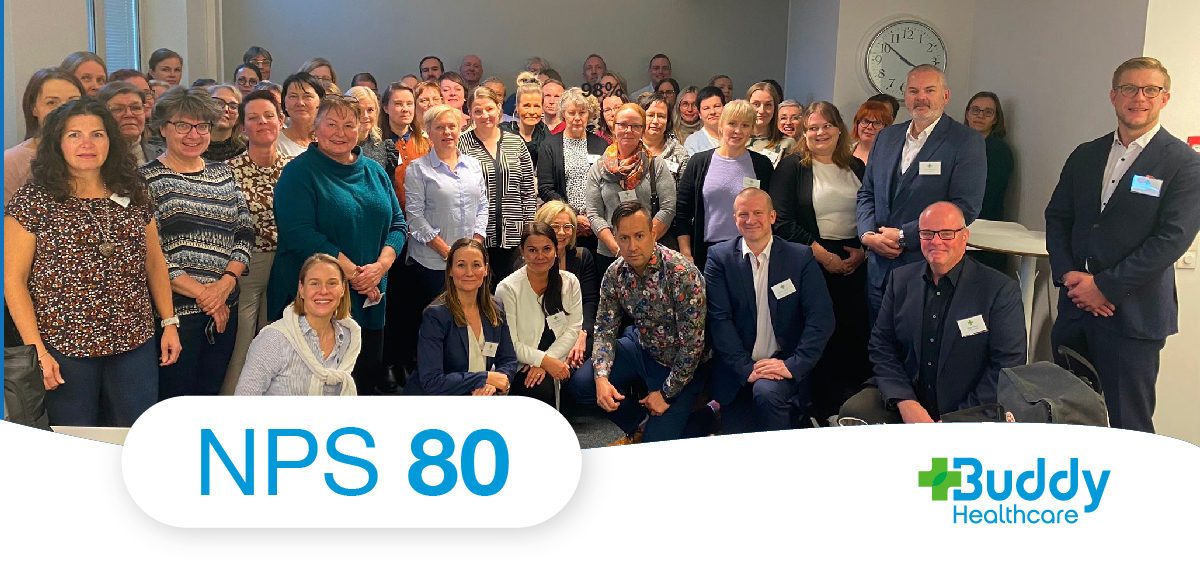The proof is in the Pilot Pudding
Try it before you buy it!
We can probably all agree that buying, or even leasing a car, without ever having seen or test-driven it is probably not something that most of us would feel comfortable doing.
Similarly, even if you read up on marathons, or have seen friends or family run one, you probably wouldn’t attempt a full 40 km of running or be very successful at doing so before first training for and completing a kilometer or two, and seeing if running is even your “thing”.
In the world of medical technology and digitalization, wouldn’t it also be best to get to know a new digital solution before committing to it fully and on every level?
This is where the big debate between stand-alone solutions and integration into existing hospital information systems comes to full effect.
One of the most commonly asked questions by our customers is whether or not a software such as BuddyCare can integrate into existing digital landscapes. Understandably, clinicians and administrators want to prevent redundancies and skip past go right into an integrated set-up, where the process is maximally optimized and streamlined. Managing change on any level brings with it a unique set of challenges, including the hesitancy toward perceived “extra workload”.
This brings us back to the analogy of the new car or the marathon. The risk of spending time and energy on something that we haven’t had a chance to truly try out, is arguably the greatest waste of time and energy. In the end, what’s more important is that the decision to buy a new car, to sign up for a marathon or in this case to implement a new software program comes from a place of knowledge, user experience, and feedback. Without these components, your clinic will start a long and hard binding process with false expectations, while you miss the desired target.
Why is a stand-alone trial of a solution beneficial?
There are many benefits to exploring the viability of a new solution by starting with a pilot project: you get the chance to see how the technology works before choosing to invest in a full-scale solution. By doing so you manage your risk and allow for refinement of the solution. Beginning to trial a product on a smaller scale with quickly observable results can supply you validation of metrics while searching for monetary savings. Additionally, the uncertainty associated with an untested product can lead to unnecessary stress and create an atmosphere that will be even more resistant to change in the future. There is a lot to be said for going into a major rollout with confidence based on having had the chance to test the solution with an engaged audience providing real-time feedback.
Last but not least, initial testing of a software product through a pilot project will provide a secure, effective solution in place to properly test your new idea. That means it will take time to implement, but it can be done more quickly than implementing the complete solution, as during the post-piloting phase the solution provider is more familiar with your care processes. This in turn enables easier integration planning & smooth execution of such a tailored integration. With a smaller scope, there’s less time between saying “go” and seeing the solution take effect.
Furthermore, the implementation of a pilot project eases the way of introducing a new “way of doing things” to a group of people and allows for early adopters and super users to be defined who can then be advocates for the successful use of a solution on a larger scale in the future.
Change of management is challenging in and of itself. Creating an atmosphere where a smaller group of employees or users can vouch for the new software or solution and motivate the rest of the team to get on board can help to support a successful rollout of whatever solution has been trialled.
What are the benefits of an integrated solution?
As much as a stand-alone solution of a new product for a certain trial period is beneficial for clinicians and administrators alike, it certainly is desirable to find ways to graduate that use model into an integrated set-up. The need for software integration is well established, and it isn’t a secret that moving through the work day having to access and master many different island solutions isn’t probably the most effective way to go about business. What can be said, is that a well-unified ecosystem helps enterprises deliver phenomenal customer experiences. The decision to integrate solutions into existing systems will eventually become necessary. And what better way to marry two IT landscapes than knowing and understanding both of them intimately through previous pilot projects. A good integration solution not only brings collaboration but also leverages the functional richness of the individual systems to create a highly productive and collaborative ecosystem.
Creating an integration solution is a complex task. It involves the understanding of the architecture of multiple systems, the uniqueness, features, and flaws of these systems, and the challenges in making them successfully work together. Several important factors need to be considered. Some of these are scalability, complete traceability of system upgrades, and change in business processes.
Scalability will become an issue, if not considered properly, when, for example, the size of a team is growing or the business expands and the software hasn’t been properly assessed to be able to grow with those changes. In addition, complete traceability needs to be provided in order to make sure it is smooth sailing between the different systems and that all the data and information can move effortlessly between solutions. Lastly, it is important to acknowledge that change is inevitable. In fact, it is the only constant in business and life overall. Evolving business needs, or change in the business model can impact the way that corresponding systems interact with each other and so it is integral to remain agile and flexible in adjusting the relationship and interaction of one or more systems as time goes on.
At Buddy Healthcare we not only make sure that all of these requirements are met (please see our blog about our most recent large-scale integration project at Tampere University Hospital) , but we also provide our customers with regular upgrades and provide them with support to manage the upcoming changes, whether in a stand-alone or integrative context.
So, what’s next?
We are here to accompany you for the long run.
Digitization of perioperative care processes is not a sprint. They are a marathon.
Nevertheless, we want to encourage you to become comfortable and familiar with BuddyCare, get your concerns and questions answered and explored on a smaller scale, so that we can then, together, go full speed into a long-lasting and stable partnership that is built on experience and knowledge rather than blind faith.
So let us show you how easy it is to start using our software, become successful at it, and then take the next step to integration when the time is right.




